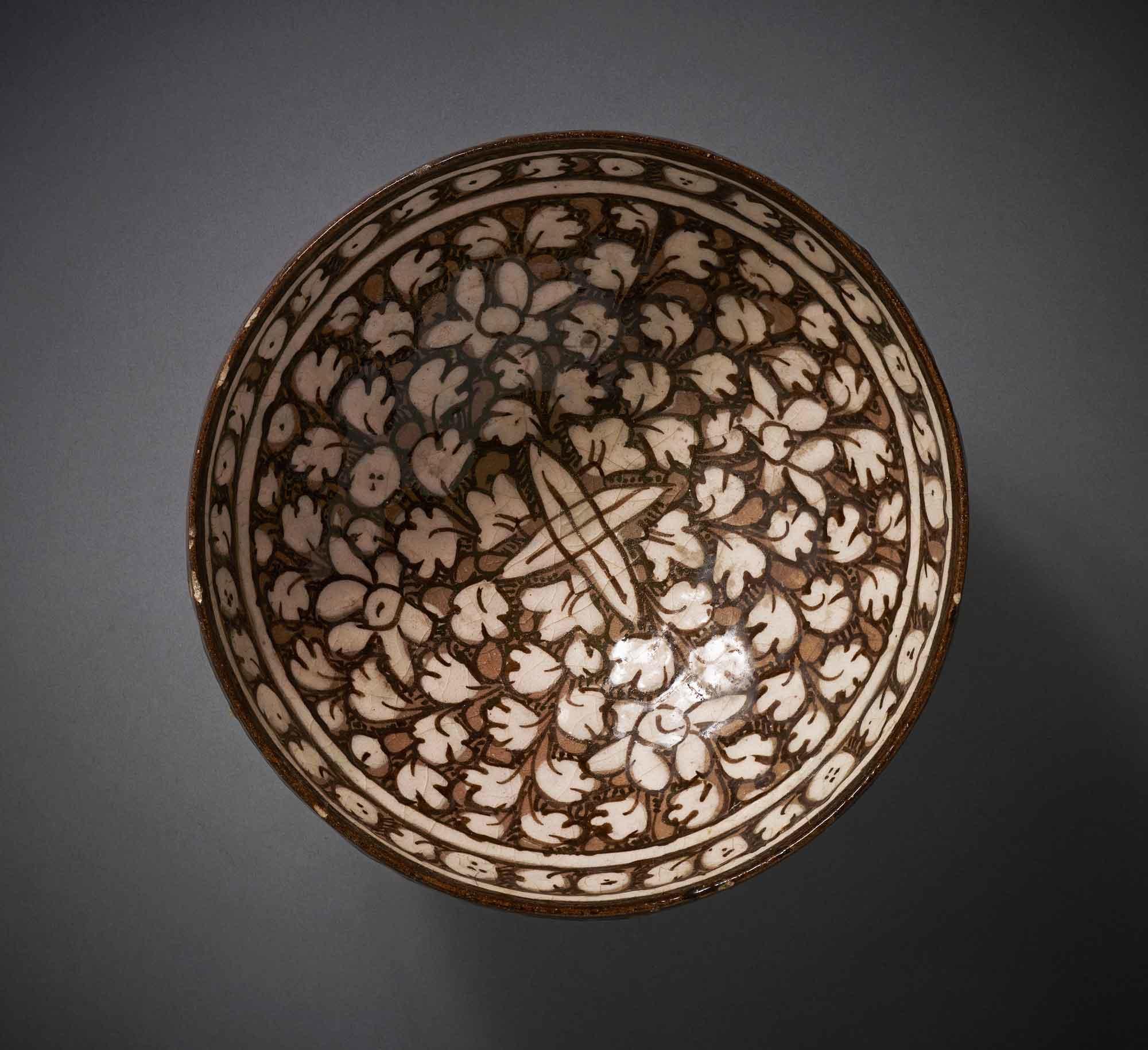Click on the image to zoom
Bowl
- Accession Number:AKM786
- Place:Iran
- Dimensions:Diameter 17.8 cm, height 8.3 cm
- Date:early 14th century
- Materials and Technique:Fritware, underglaze slip-painted
Textiles that were traded along the Silk Route were the most common way in which ideas and decorative motifs such as lotuses, dragons, and sphinxes were transferred between China and Iran. With the Mongol conquests of the thirteenth century, and the conversion of the Mongol Ilkhanid dynasty to Islam, Iranian potters began using these imported motifs in their designs. Here, the bowl is decorated with a mass of leaves surrounding lotus flowers. The bowl draws its influence from green-glazed stoneware known as celadon that was imported from China during the fourteenth century. The painted arcade panelling on the exterior of the bowl is a local rendition of the moulded form of the Chinese origin. This bowl, along with several other exquisite examples in the Aga Khan Museum’s collection, are attributed to the city of Sultanabad in western Iran.
Note: This online resource is reviewed and updated on an ongoing basis. We are committed to improving this information and will revise and update knowledge about this object as it becomes available.


